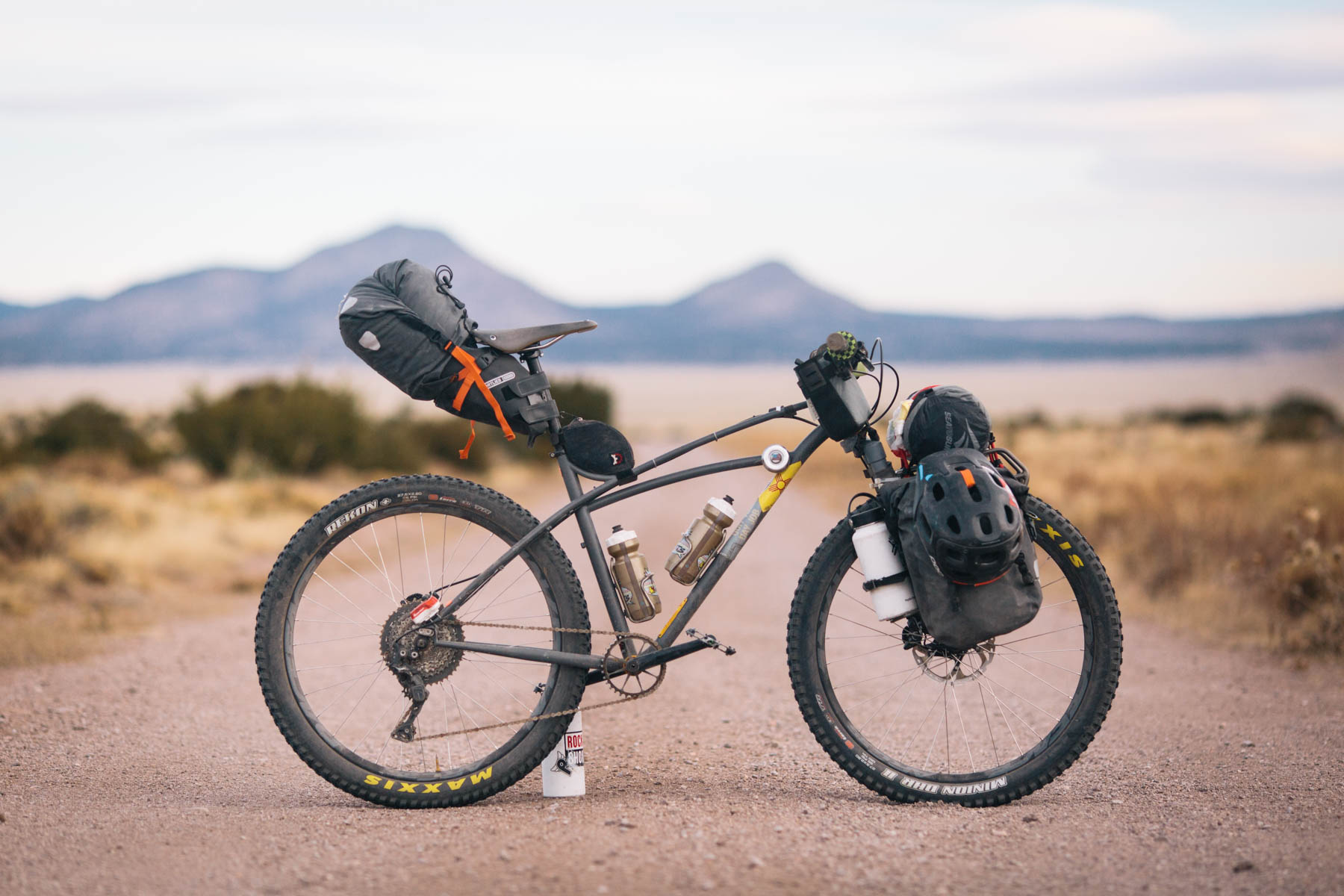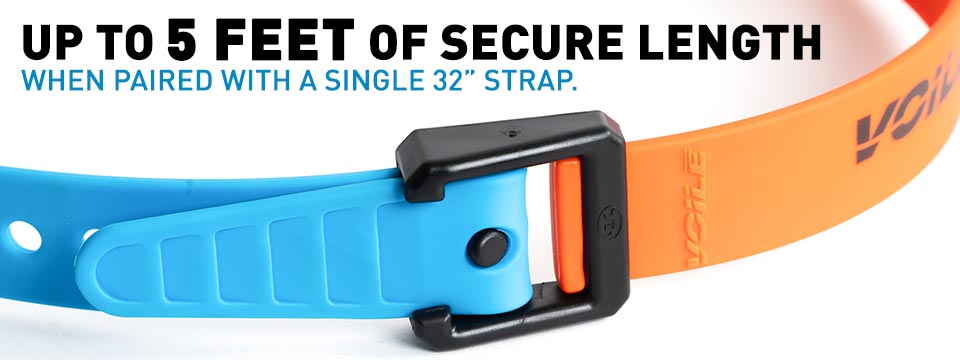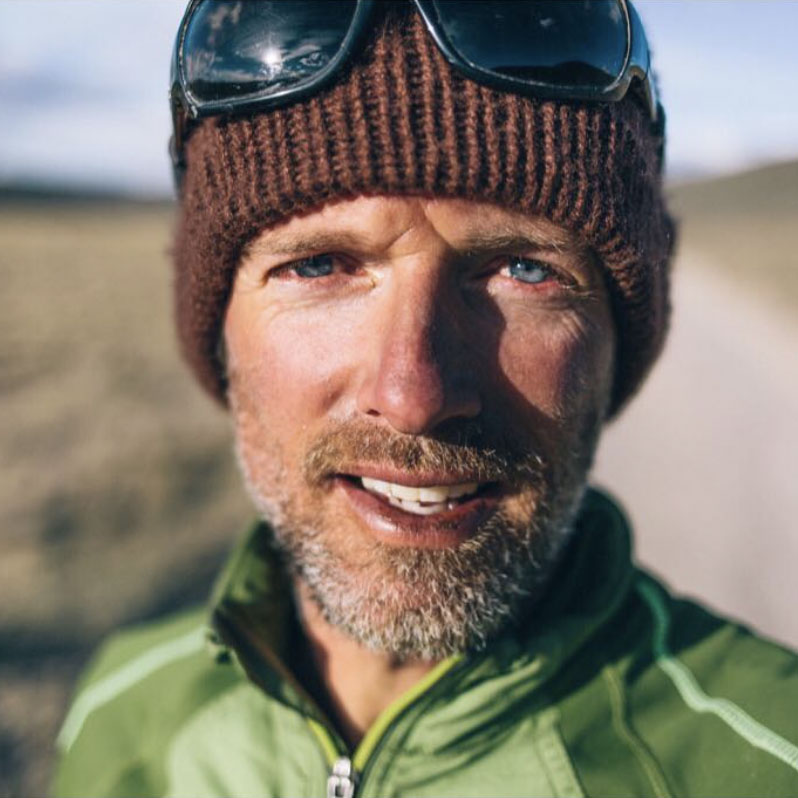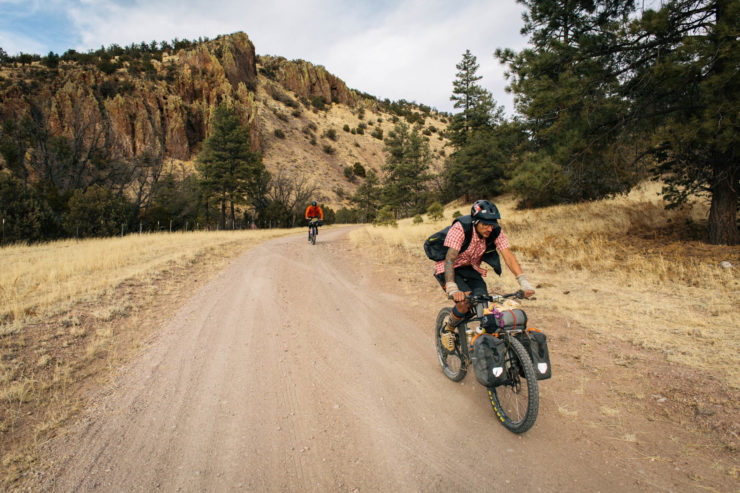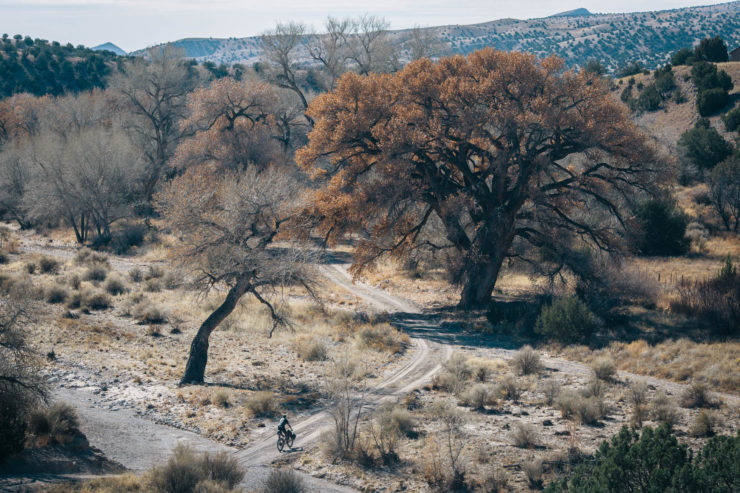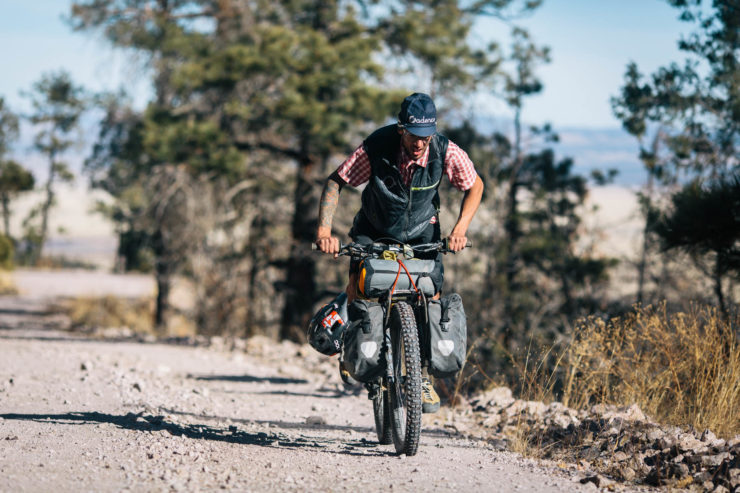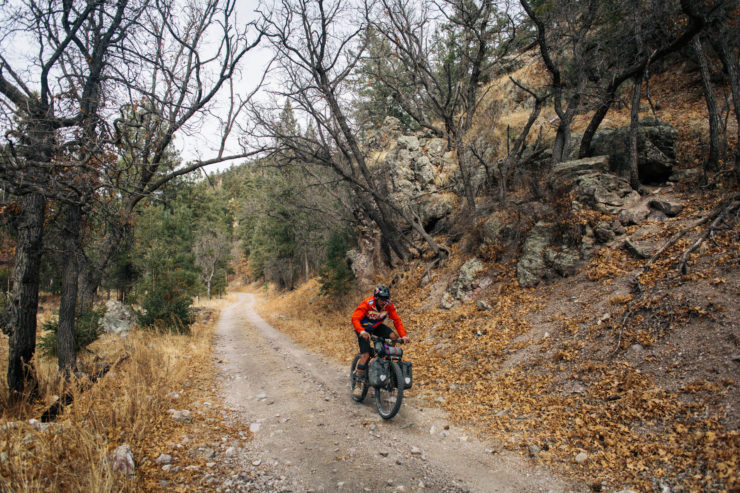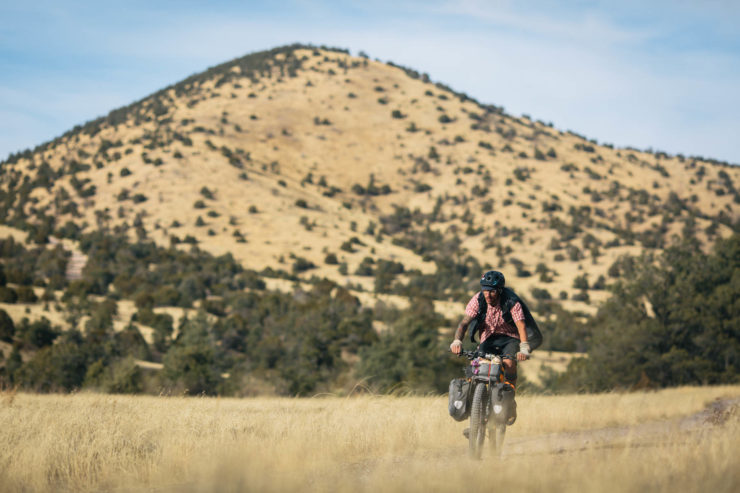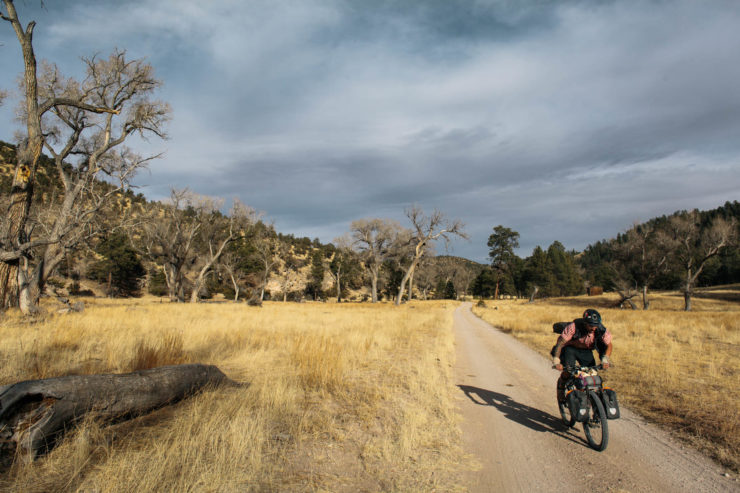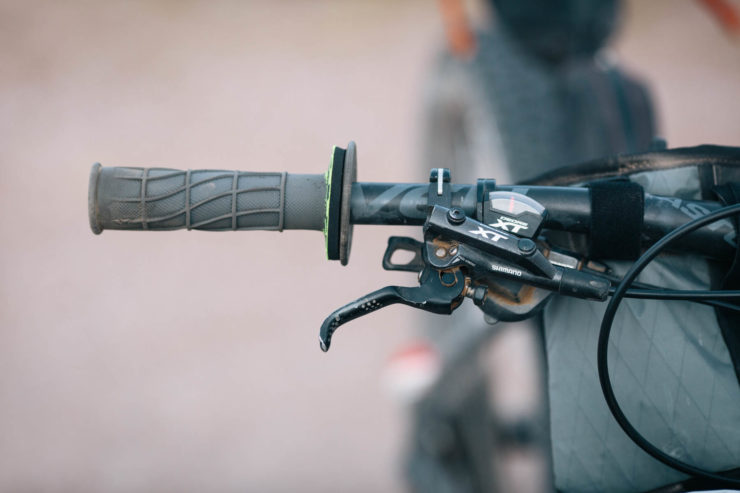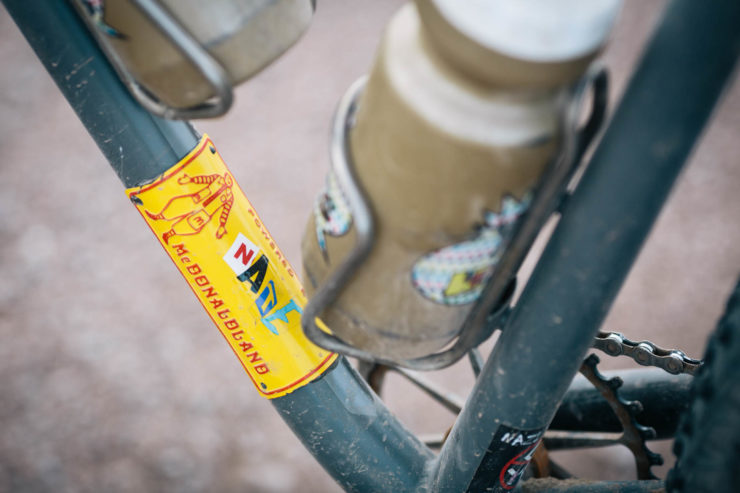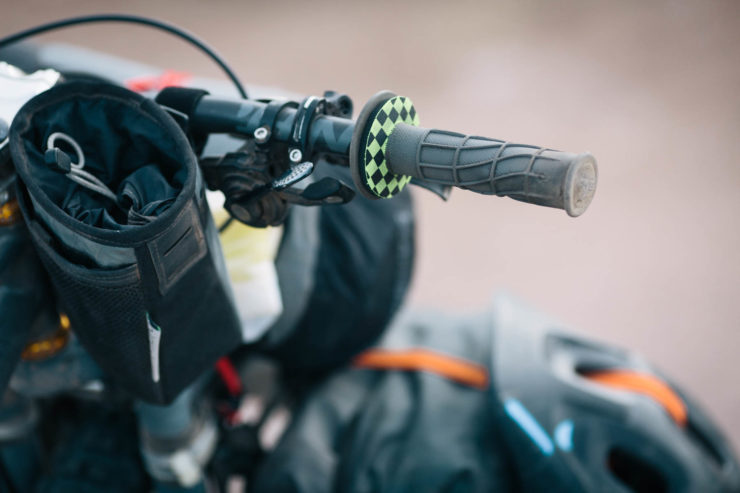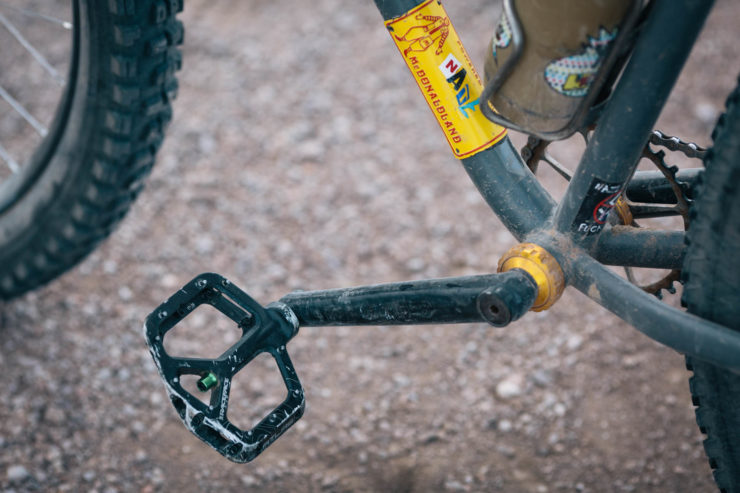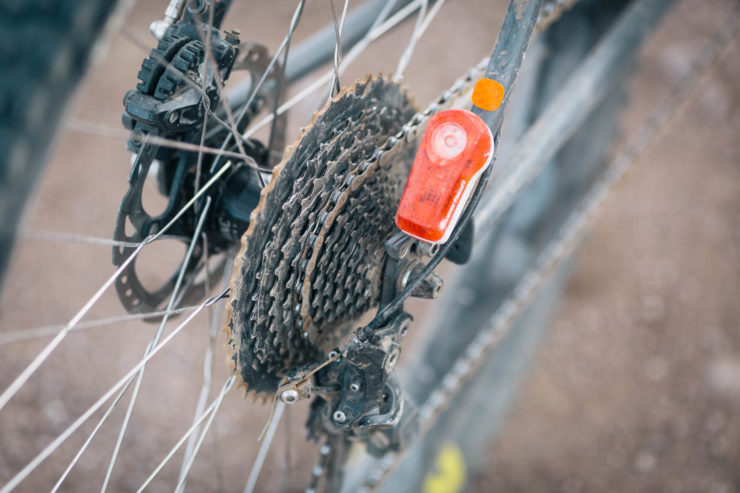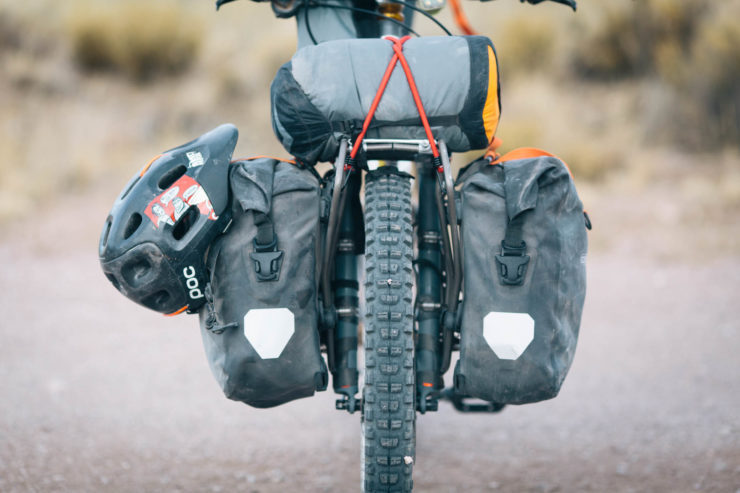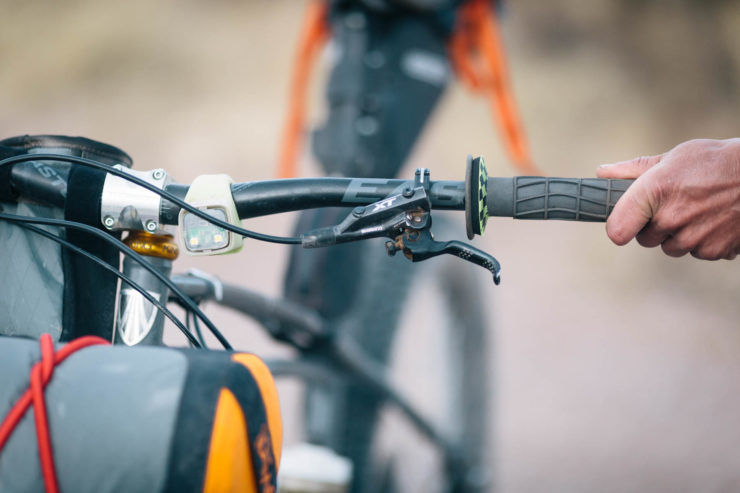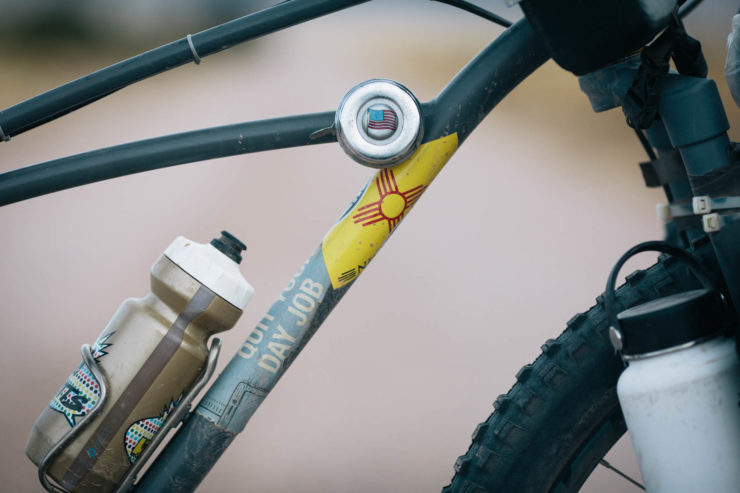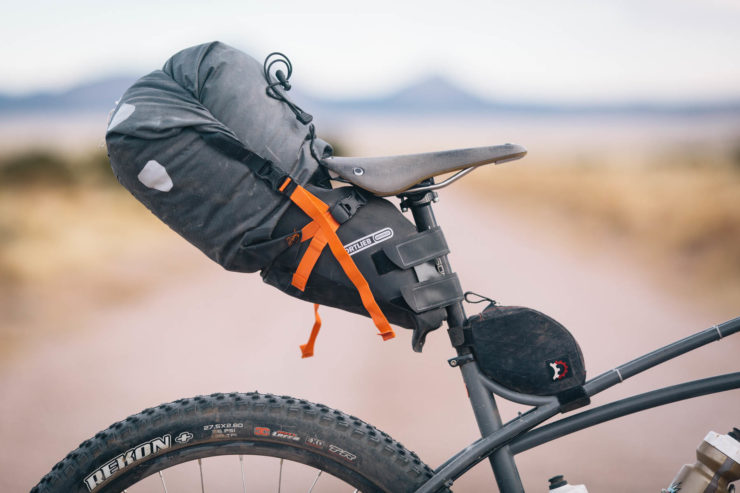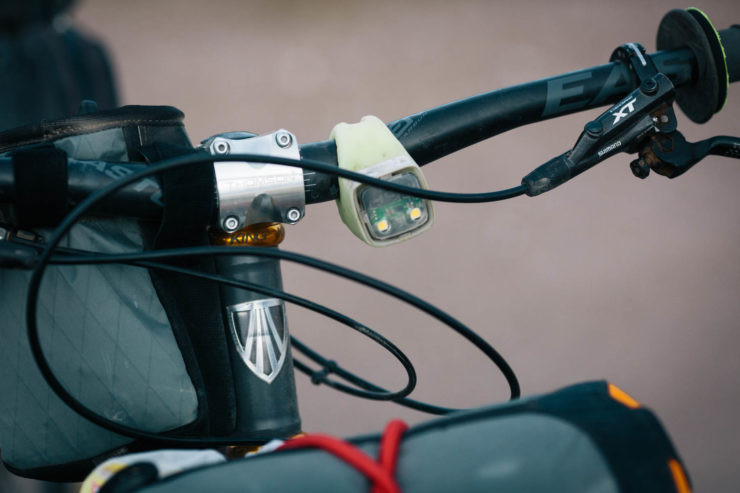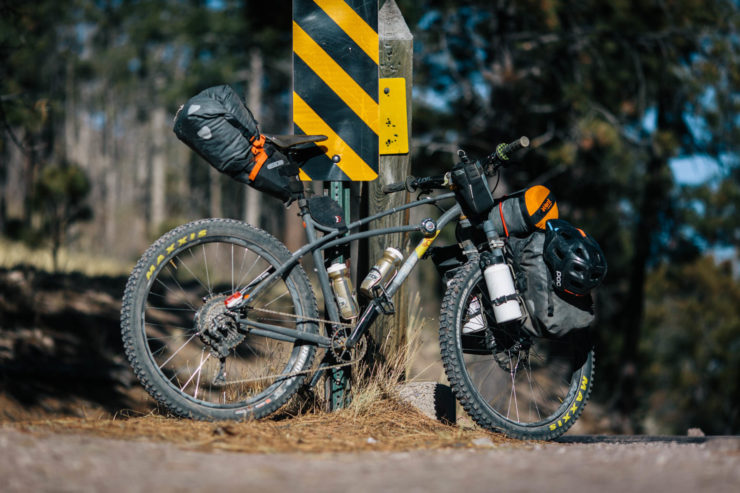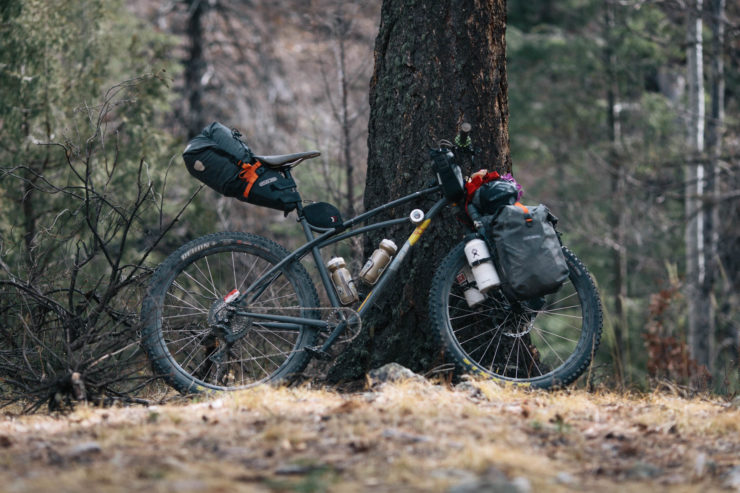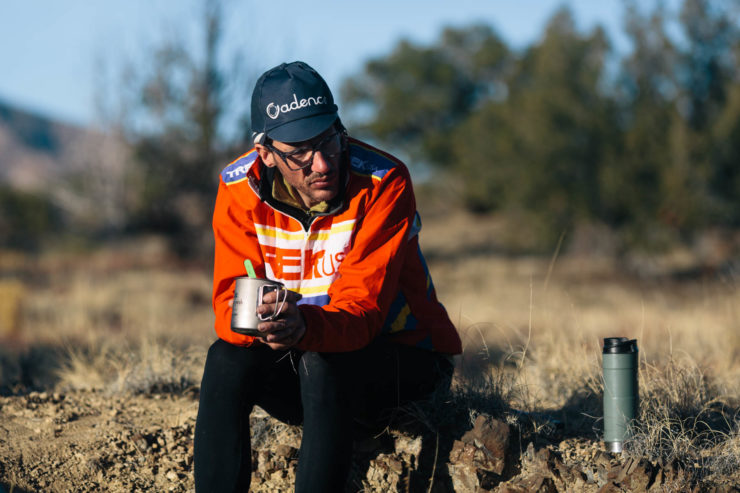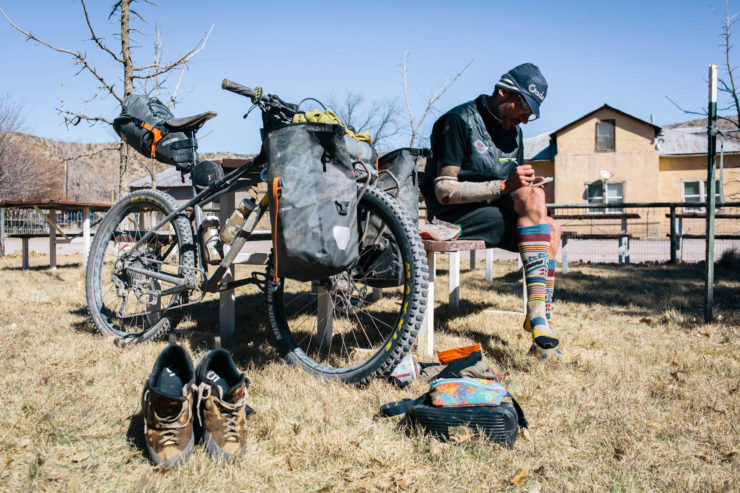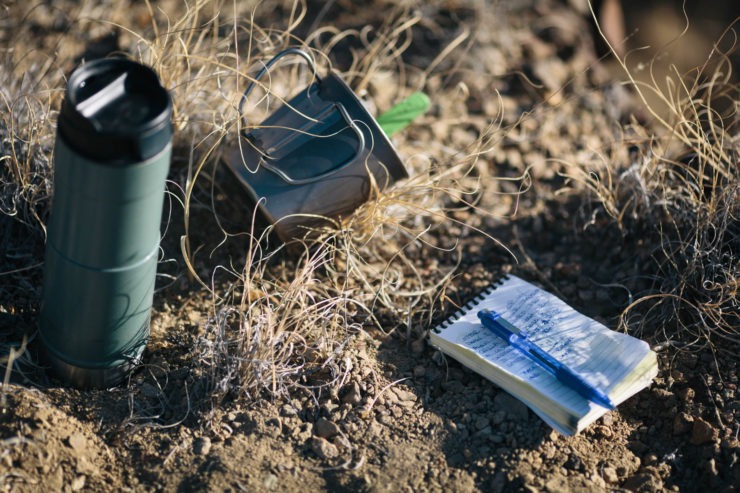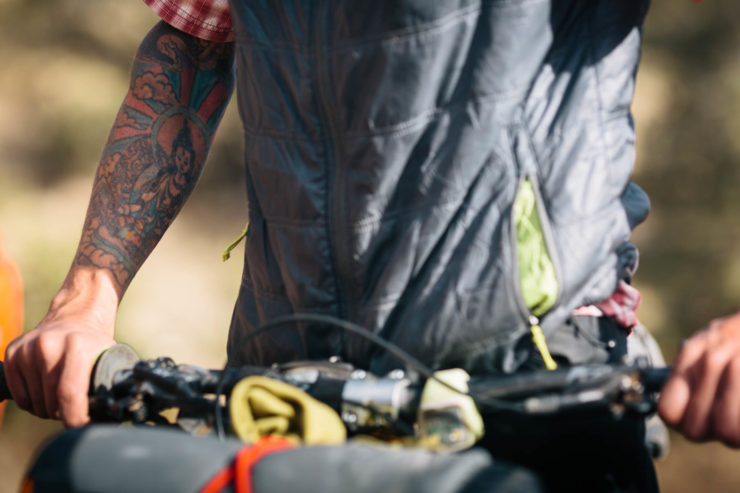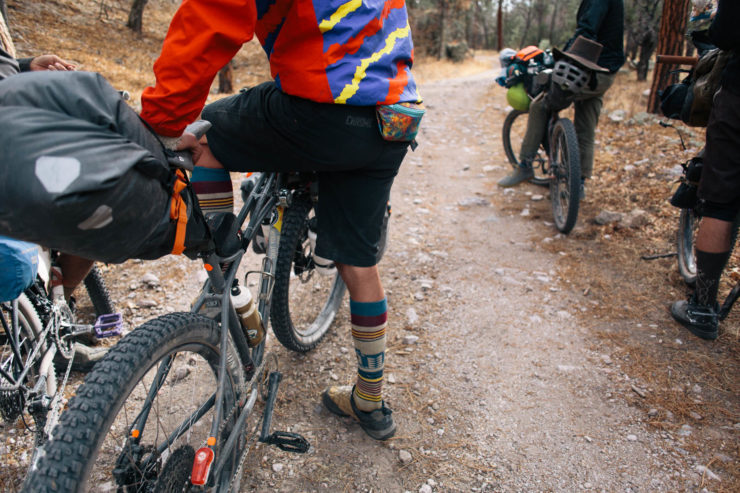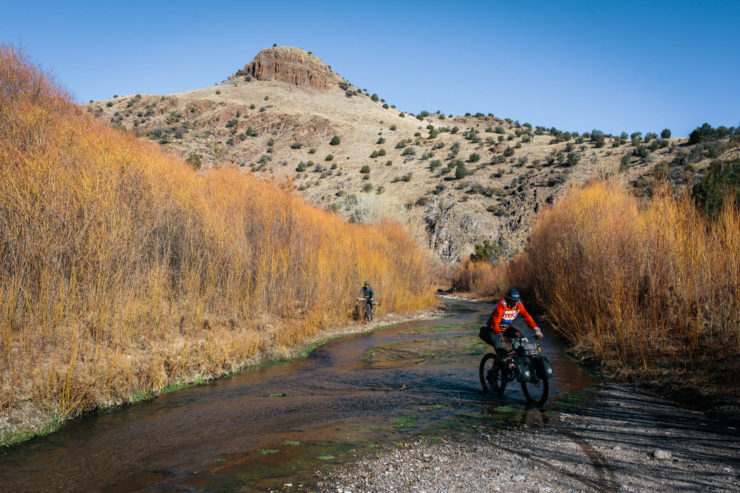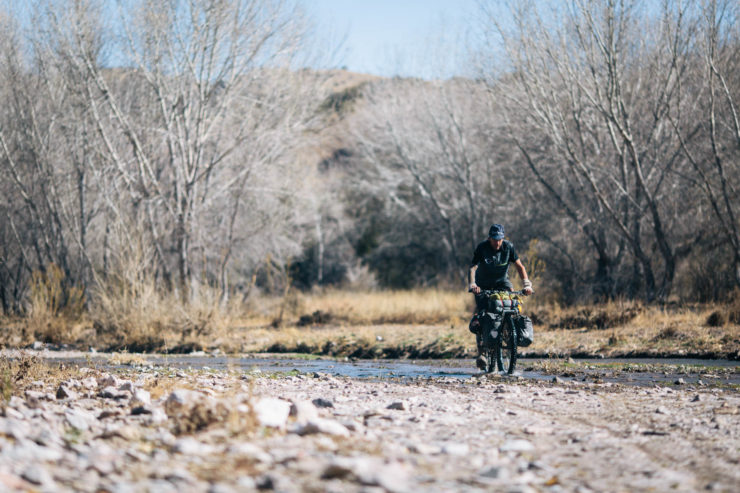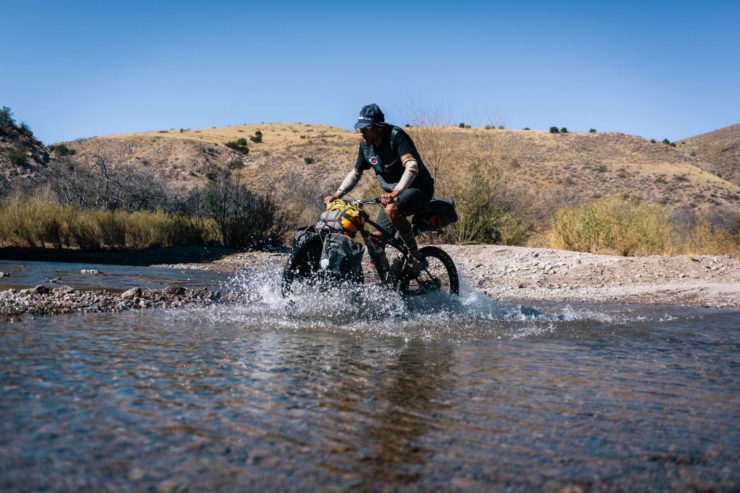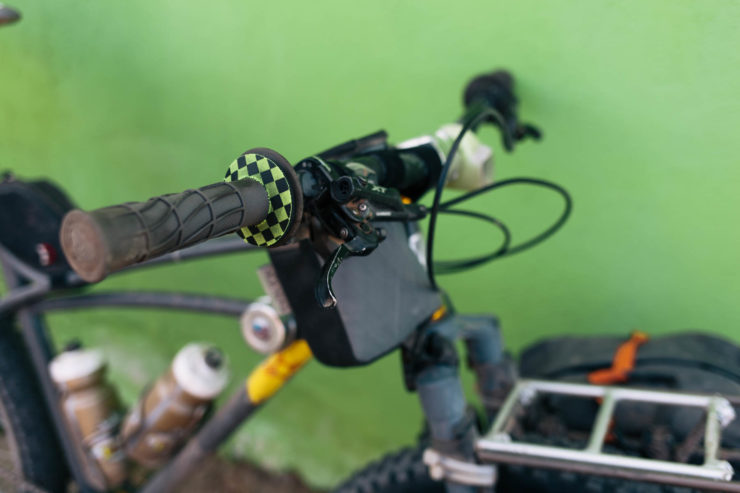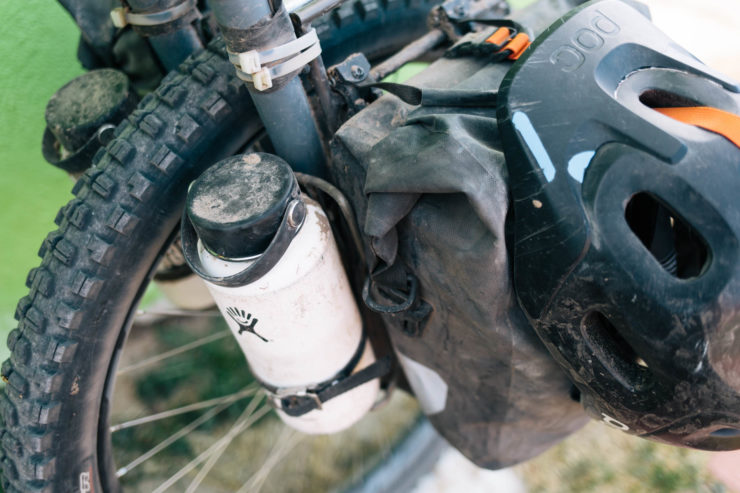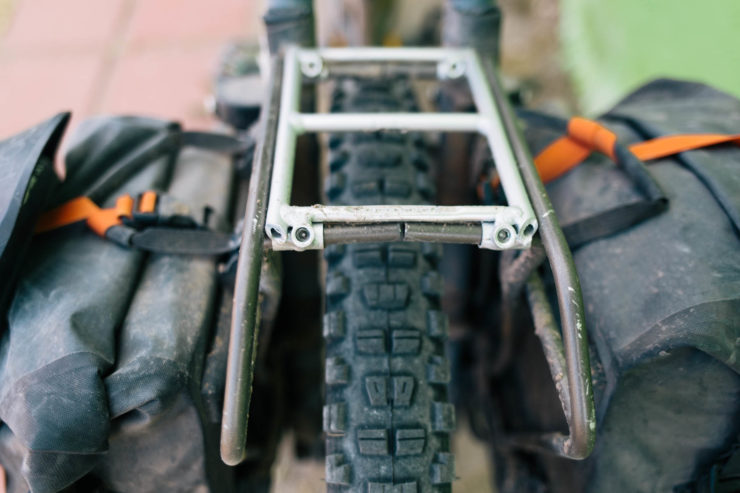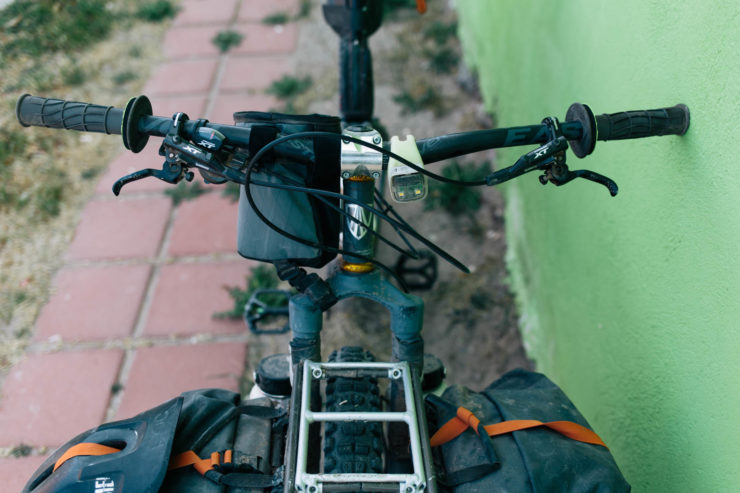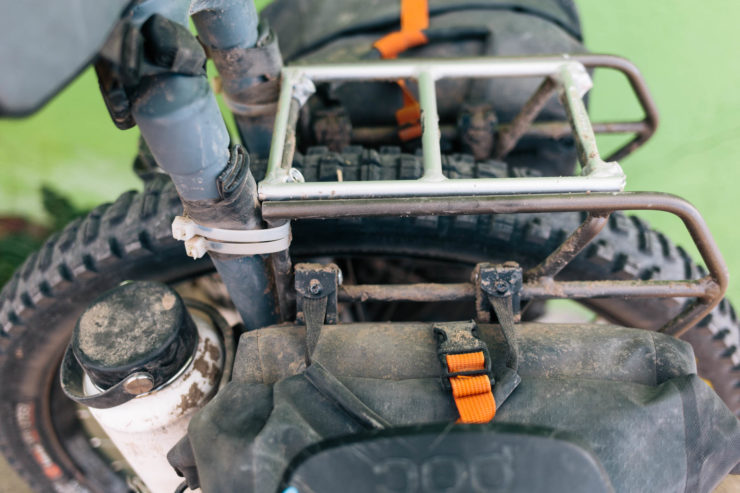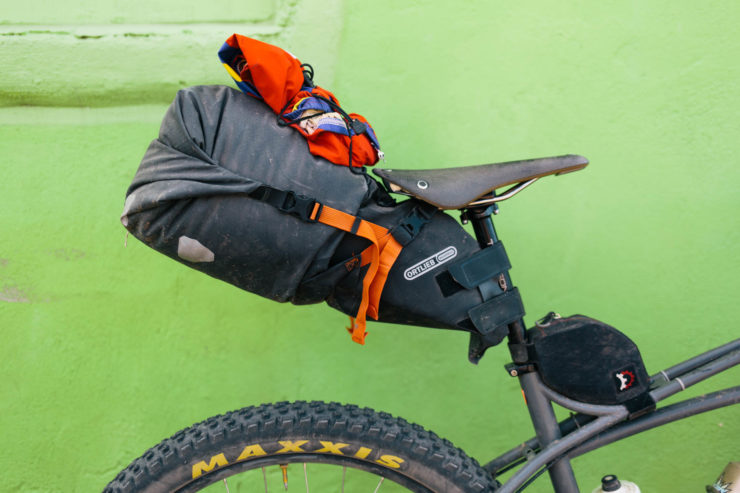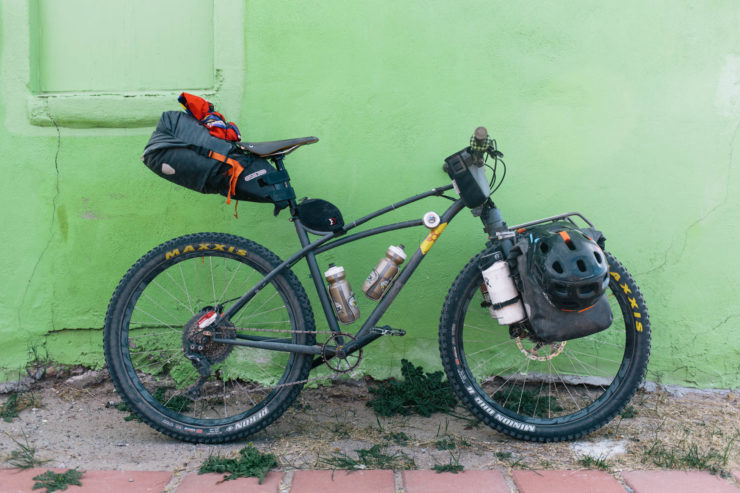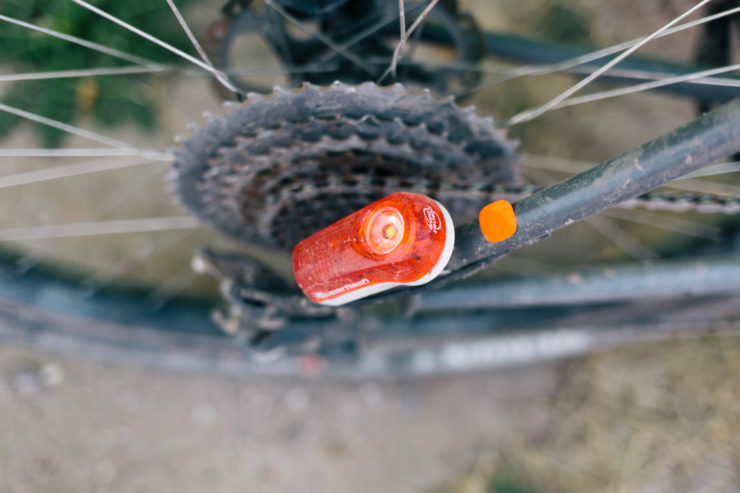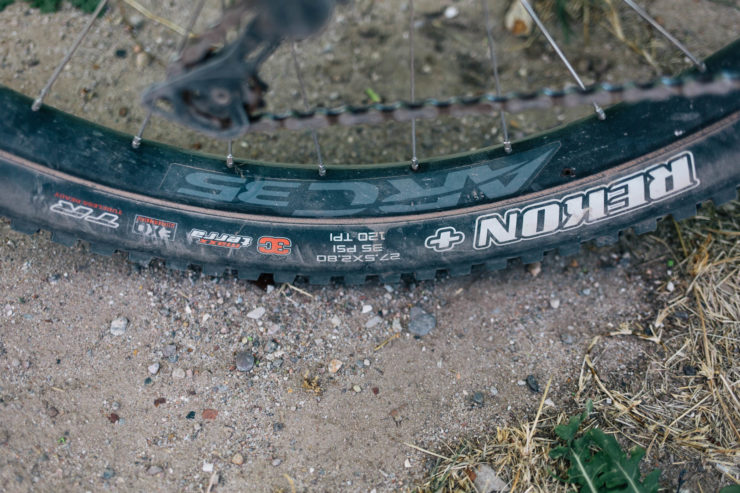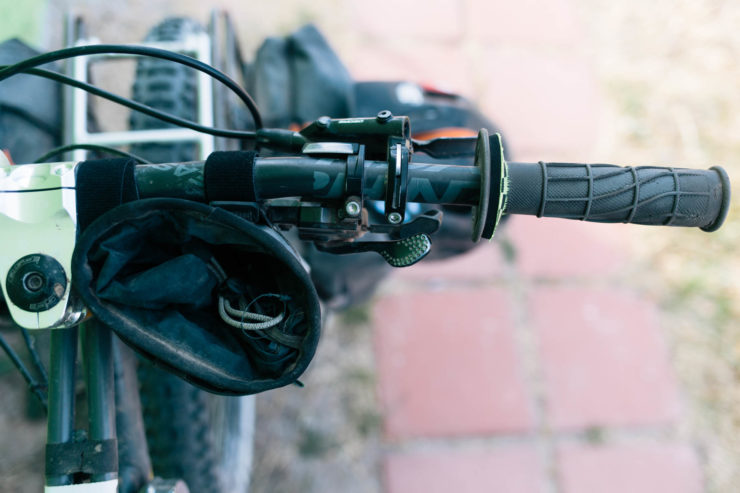Nate Shearer’s 27.5+ Trek Sawyer and Spliced Films
In our latest Rider and Rig, we caught up with Nate Shearer as he rode the New Mexico Off Road Runner and the Monumental Loop. Along the way, we talked front loading on his B+ Trek Sawyer, racing in the BMX Nationals, using bikes as a form of escape and identity, and abstract storytelling…
PUBLISHED Apr 4, 2018
I’ve love the way bicycles have the ability to become, in their own way, expressions of ourselves. They reveal clues to our pasts and even our future intentions. Sometimes, as I get to know someone, their bike makes more and more sense, like a cryptic cypher. Nate Shearer and his reimagined Trek Sawyer certainly have this story to tell…
Can you tell us a little about your cycling background?
I got my first bike at six years old and wanted nothing more than to ride. It was a candy-apple red Rampar 16” BMX bike. I brought that bike home and was so proud of it, I walked it down the street to show a neighbor, who asked if I could ride it yet. I told him no, pushed the bike back up the street and my Mom taught me to ride by holding on to the seat as I coasted down the hill in our backyard. That was my first taste of excitement and freedom and have been chasing it ever since. As an introvert and a bit of an outcast, cycling’s individual nature really appealed to me. I raced BMX for 13 years, worked as a messenger in DC for six and got my first real taste for mountain bikes riding DH and slalom when I left BMX racing in the late ‘90s. Cycling has taken me through everything in life. It allowed me to make money and afford my first place out of high school. It almost got me killed when I went head first through the windshield of a taxi, breaking both arms, putting me in the ICU for two days with a fractured skull. It made me lose everything when I folded my knee at the Quakerstate Nations in ‘95 and brought me back to health, as one of my first exercises in PT was riding the stationary bike. It gave me self-esteem, community and an escape from the difficulties of my teenage years. It’s my meditation, and occasionally it’s just something I do because I don’t know what else to do.
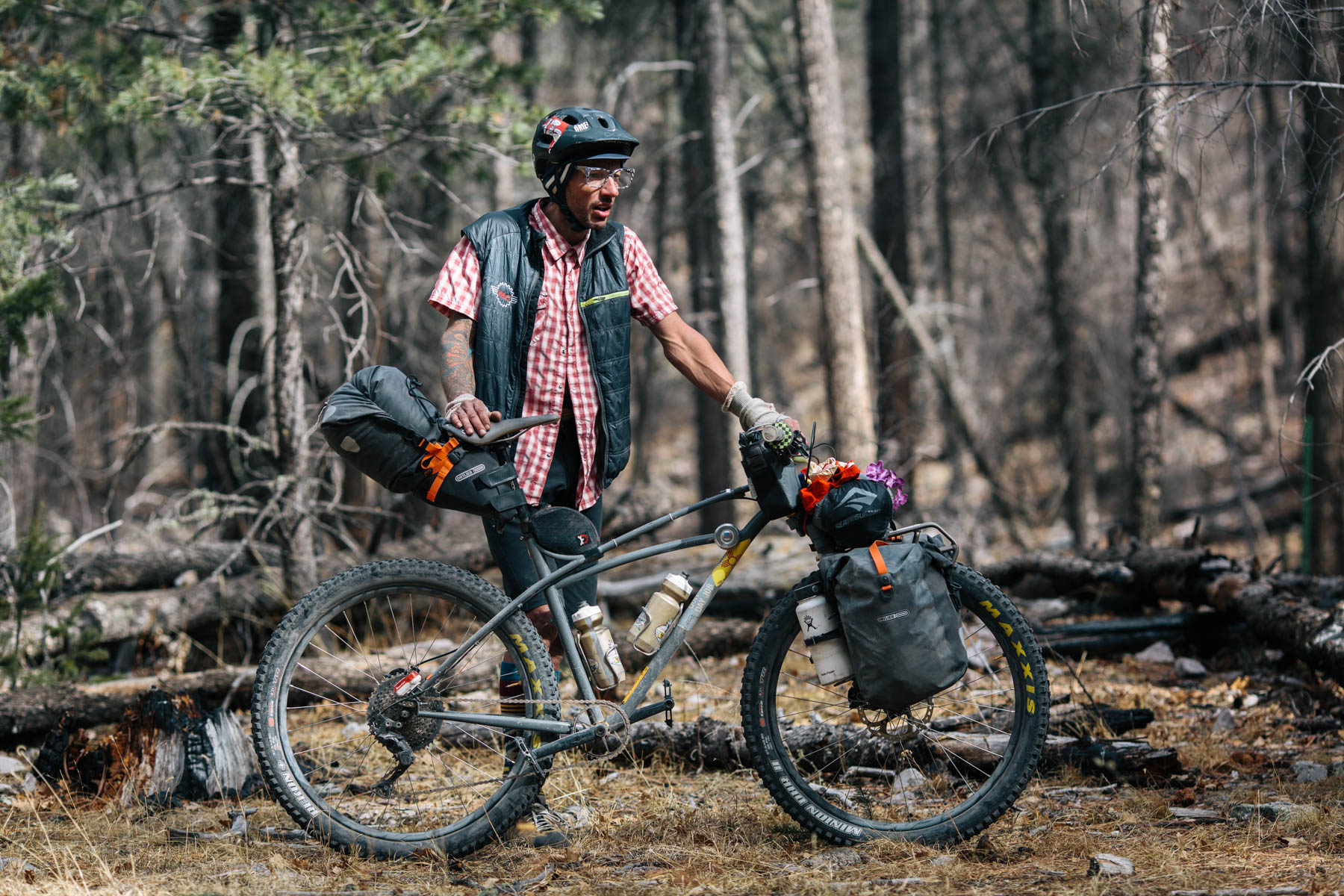
What got you into bikepacking/touring/exploring?
Cycling has always been my source of exploration and adventure. In the ‘80s, I explored the neighborhood on my bike, sneaking out of the boundary my parents set and exploring new neighborhoods. Once I started going to BMX Nationals, I ventured out of my suburban bubble to see new tracks and meet new people around the country. I always kinda sucked at the whole racing thing, but it was more or less the price of admission to meeting individuals with common interests and riding with them. Some of my BMX friends started dabbling in the freeride scene and over time, I found trail riding and explored new mountains in the region, and that just kind of progressed into doing overnight trips. I think the first real overnight back country adventure I did was the San Juan Huts trip from Durango to Moab. We opted out of the standard, predominantly double track route and sought out as much single track as we could connect. Granted, on this trip, you aren’t really “bikepacking” per se, but the idea of going on a multi-day adventure and not having to carry everything really appealed to our group of people, most of whom were a bit more “freeride” oriented. We did that trip three years in a row. There have been plenty of overnights since; some falling into the realm of bikepacking, while others were just heavy trail days followed by minimalist nights hunkered down in the bush with little more than a blanket. At heart, I’m more of a trail rider, so I am constantly seeking this balance of staying nimble, being able to ride to my level, and not being too uncomfortable at night.
Your setup harks back to your BMX days and has a tonne of great little details that I really enjoyed studying. It’s a very idiosyncratic build too. Can you run us through it?
The first things people often notice about my bikes are the flanged grips and flat pedals. Flanged grips give my hand something to press against or hold onto when I adjust the way I hold the bars. I like being to adjust my grip and stance on the bike in different situations. For instance, while leaning the bike into a turn or through a technical patch of trail, I might press on the grip flange with the side of my hand and stand on a combination of pedal and crank arm to give more leverage. Likewise, going into a turn, if you point your knee toward the exit of the turn, your body will tend to follow. It’s easier to point that knee if that foot can adjust slightly as well.
The Profile cranks I opt to ride are considerably heavier than their aluminum or carbon counterparts, but after breaking and bending several pairs of mountain bike cranks (both carbon and aluminum), I went back to the durability of Profiles, which have remained relatively unchanged for 20 years.
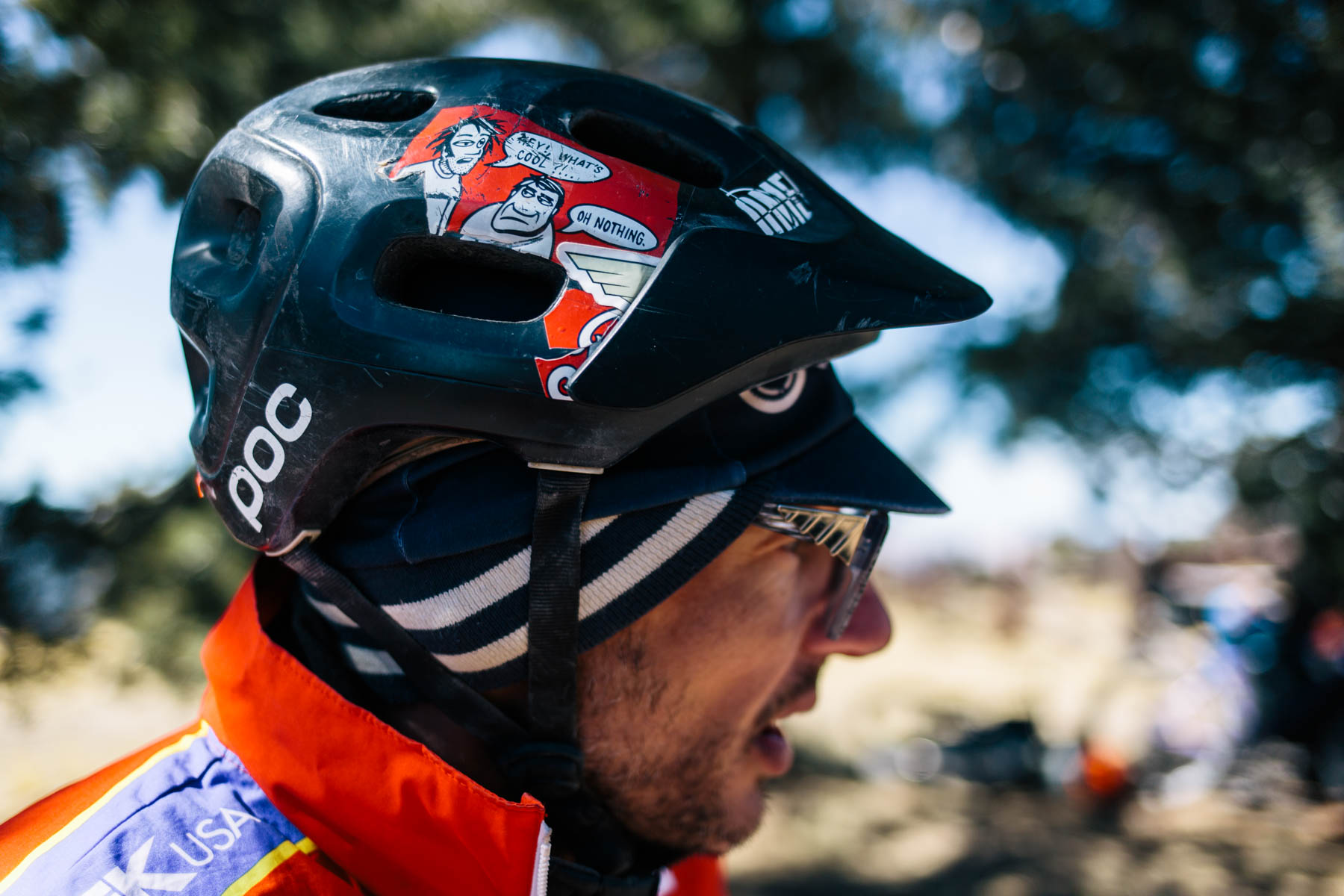
The whole sticker thing is something that has just carried over from skateboarding, I suppose. It was a way of making your board unique to you and it gives things a somewhat deconstructed feel, which is a recurring aesthetic in my life. I also have somewhat of a hang up with the NASCAR style graphics that adorn bikes currently. I would probably do the same to my van if it was covered in cheesy Ford logos from head to toe. And no, the irony is not lost on me as I am wearing that loud Trek windbreaker in some of the photos. Like I said, it’s only somewhat of a hang up. That windbreaker was also part of my father’s ‘80s/’90s cycling wardrobe, which I recently came into possession of.
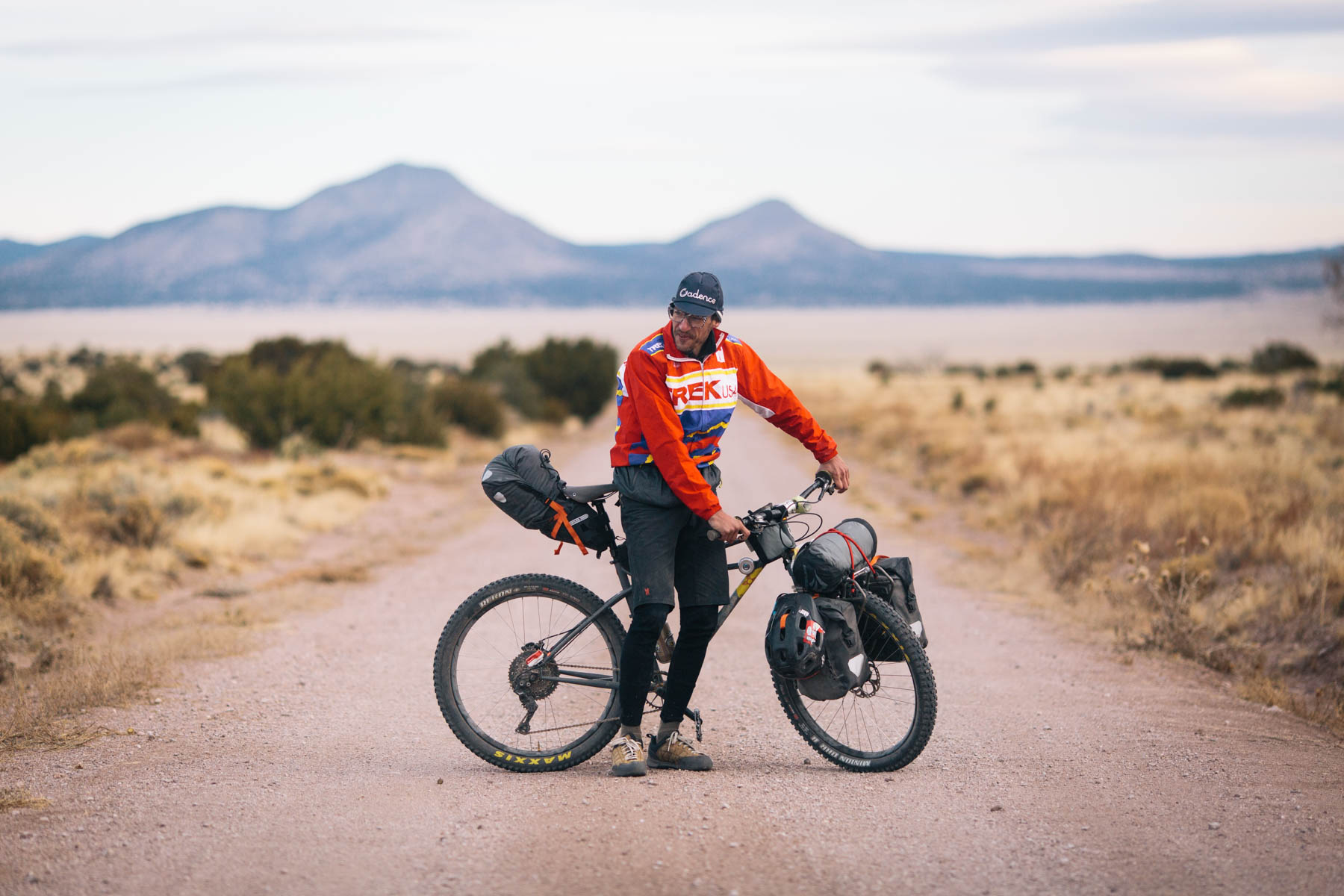
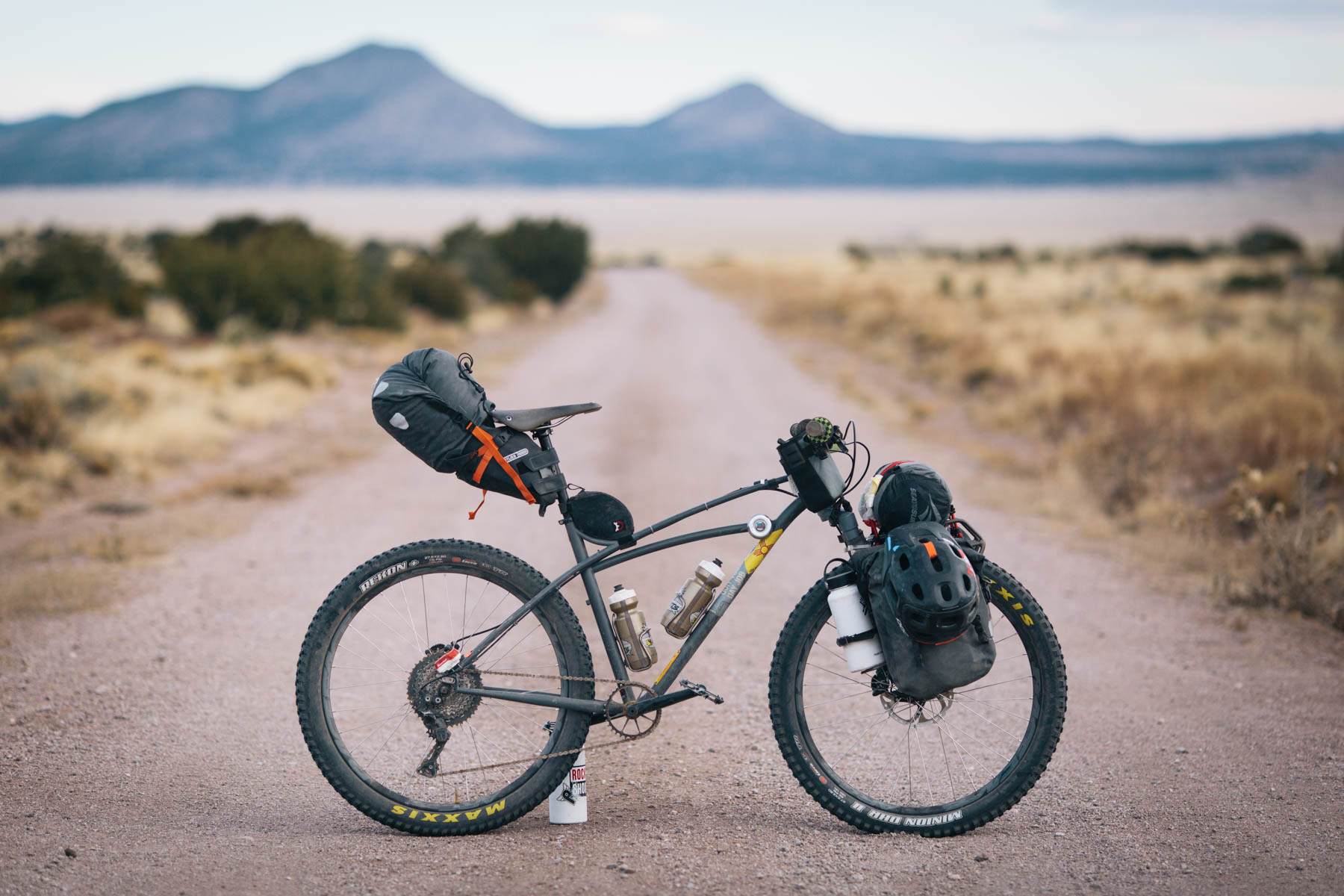
And your choice for the bike itself?
This bike was more or less cobbled together last minute by pilfering bits from other units I had afoot. I picked up the frame used about a year ago and was looking for its place in my stable. The previous owner talked about setting it up as a B+ bike. However, the bottom bracket was a bit low for his liking. I was never big on the whole G2 thing Trek/ Fisher was doing in that era, so I swapped out the fork for a longer carbon unit without the big offset. Most of the other bits came from a hardtail I had kicking around, and the Profile cranks were from a heavily neglected DJ bike. Non-boost I9 classic hubs were part of an abused set of 29er wheels and got twist laced to some 27.5 x 35mm hoops.
You’ve been running a front-loading setup. Having followed you down some rough roads on the New Mexico Off Road Runner, it definitely didn’t slow you down. Any special reason for running things the way you do?
Ideally, I’d pack my weight closer to the bottom bracket, low and centered. However, frame bags (or anything MTB-related for that matter) doesn’t come easily in DC, and I sure wasn’t interested in wearing a backpack for two weeks, so I went with the front rack. It’s a heavily modified Blackburn Outpost rack that I attached with hose clamps. I once delivered pizzas for Domino’s by bike, and know just how awkwardly a rear-weighted bike handles, so I chose to load up the front, which I have had good experiences with – the only drawback being getting the front end up for step-ups and the like. That said, railing turns on a front-loaded bike is a riot; steering from the rear, sternum pressed against the crest of the saddle, with endless traction coming from a weighted-down front end. Just don’t touch the brakes. The panniers serve as curb feelers of sorts. If you hear something dragging across the fabric, it’s time to tuck that knee in.
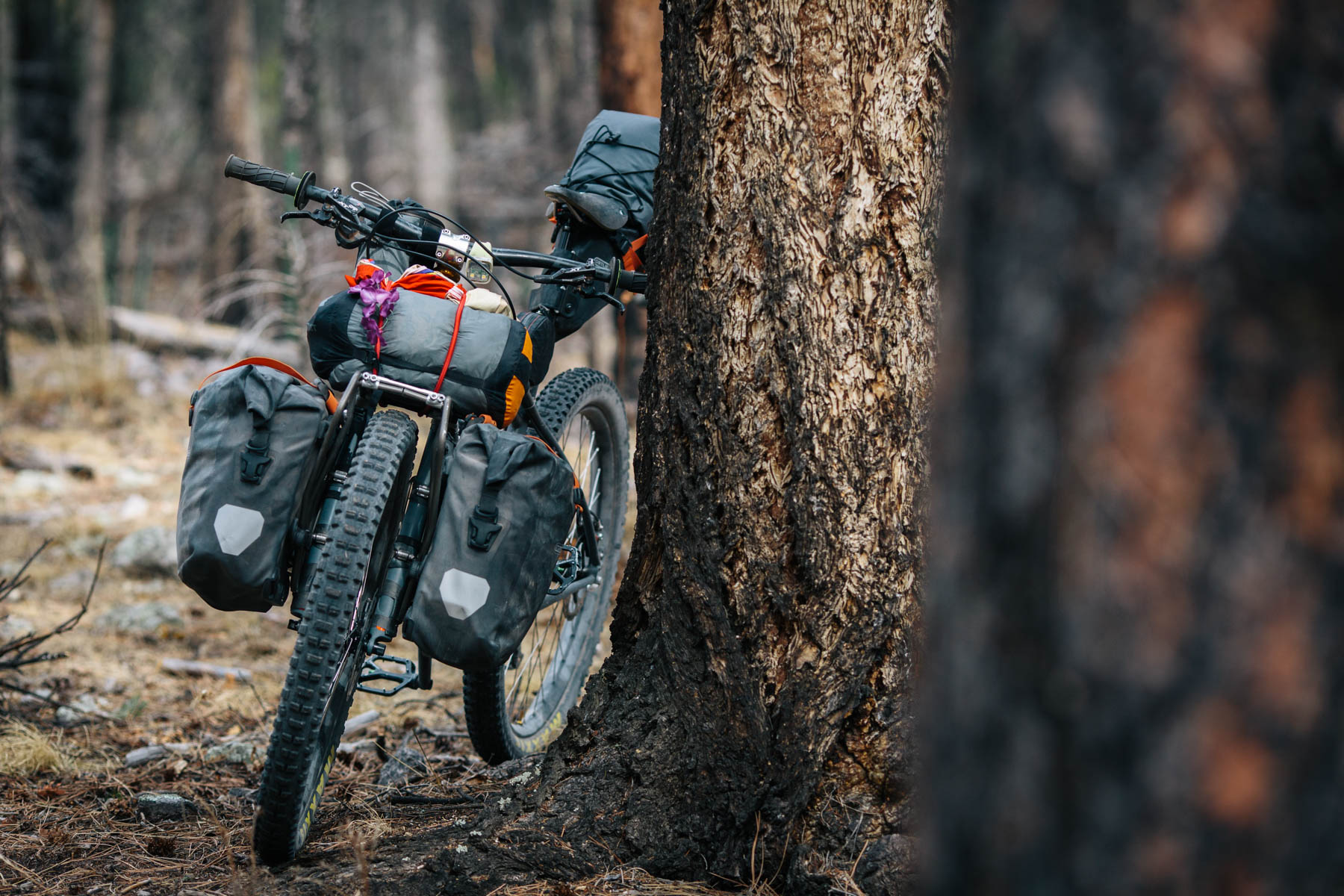
The originality of your short films, the way you blend/sample/splice film clips with stuff you’ve shot on trips, blew me away. Can you tell us about the inspiration or thought process behind them?
I consider myself to be a bit of a storyteller. Whether it’s through writing, photography, or most recently moving images, my goal is less about high definition imagery, or proper English and more about capturing a moment and trying to find my voice to transmit that story to others. With these film shorts, I tell a story with rough clips I have taken; filling in the blanks and creating the storyline using appropriated movie clips; often from films familiar to me from the ‘80s, along with songs, soundbites, and dialogue that for one reason another make an impression on me. Sometimes they are pretty abstract, but, I suppose, so is the way I see the world. For instance, when walking down the street, I don’t have this slow burn, fluid experience of one scene gracefully transitioning into another, but more this disjointed barrage of intense blasts of media. That’s what I try to tap into in my film shorts.
Any obsessions aside from bikes?
I have had lots of interests and obsessions over the years, but the bike has always been there for me. Skateboarding, cars, motorcycles, punk music, and my job as a hairdresser have all been major influences in my life. They have all offered up a community that lies somewhere along the fringes, which is the place in the world I feel most comfortable operating. When I moved to New York City in the early 2000s, I had to get rid of the cars and motorcycles I had accumulated over the years. At that time, I had six early ‘70s Yamaha 2-stroke GP replica bikes in various states of disrepair, as well as 1965 Dodge D100 and a Plymouth Fury wagon, both powered by Mopar small blocks. In New York, the bike took a back seat and it was skateboarding that served as my escape. There was this magnificent wooden bowl tucked at the end of this super sketchy derelict warehouse complex in Brooklyn known as the Autumn Bowl. One could pay $75 a month for a key where you could open up and skate anytime, day or night, and it had a sound system where you could plug in your iPod. I guess it’s all about time and money and making the decisions on where you want to invest those limited resources.
Lastly, any plans for future trips and/or bike builds?
February is usually my chance to take a long vacation, as work tends to slow down after the holidays and I feel the need to break up the dismal DC winters, so as to not go completely mad before spring hits. Once we get a few warm days, I get really antsy. It’s a crap shoot until mid-April or so, weather and trail conditions wise, and that’s when the big backcountry days start coming to fruition and I venture down to Harrisonburg a few times a month to ride with folks down that way before mid-summer’s heat and oppressive humidity begin to set in. There are some multi-day grassroots events that occur once a month or so from May to October in the East and I try to hit several each year. There is also a big two-day ride on my radar, with an idea that started as a joke a few years ago. A few friends and I might give that a spin here in a month and see what happens. I would really like to try to self-support it, but the terrain is extremely technical, with steep pitches and rocky spines for 12ish hours a day that just wear you down, so riding loaded would just add another element to an already suspect undertaking. I’m also planning on giving The Ring a try in a couple weeks, which is along that same ridgeline and spans 75 miles of slow, picky rock crawling that has only been completed by a handful of riders. I gave it a few tries in years past, but early season injuries have plagued me the past couple of years, so my fitness wasn’t quite up to the task during prime conditions. We will see if I can’t keep myself in one piece long enough to give it another shot. I’m expecting to be out there for 16 hours or so.
Bike wise, I would like to think I’m pretty set up right now. My loft is on the smaller side and I have storage for two bikes, although I currently have three in there. The Sawyer is my daily rider, I have The Following by Evil, which I built up late last year with a similar list of components, as well as a fixed gear klunker that I can’t seem to let go of. I just did a major purge of bike stuff, but somehow I always seem to accumulate more—a problem I think most cyclists can relate to.
BIKE BUILD HIGHLIGHTS
- Frame and Fork: 2012 Trek Sawyer (L) w/ Carver carbon fork
- Headset: Chris King
- Crank Arm Set: Profile 170mm chromoly arms
- Chainring: 33t Tree 4130 sprocket
- Handlebar: Easton Haven carbon
- Stem: Thomson 50mm
- Seatpost: Thomson
- Saddle: Brooks C15
- Grips: Ame Waffle
- Pedals: Race Face Atlas
- Chain: Shimano XT
- Shifter: Shimano XT 11sp
- Brakes: Shimano XT
- Front hub: Industry 9 classic
- Rear hub: Industry 9 classic
- Rims/tires: Race Face ARC 35, Maxxis Minion DHR (f), Maxxis Rekon+ (r)
Thanks to Nate Shearer for sharing his words and films. Find him on Instagram @thejunkmilechronicles.
Please keep the conversation civil, constructive, and inclusive, or your comment will be removed.







